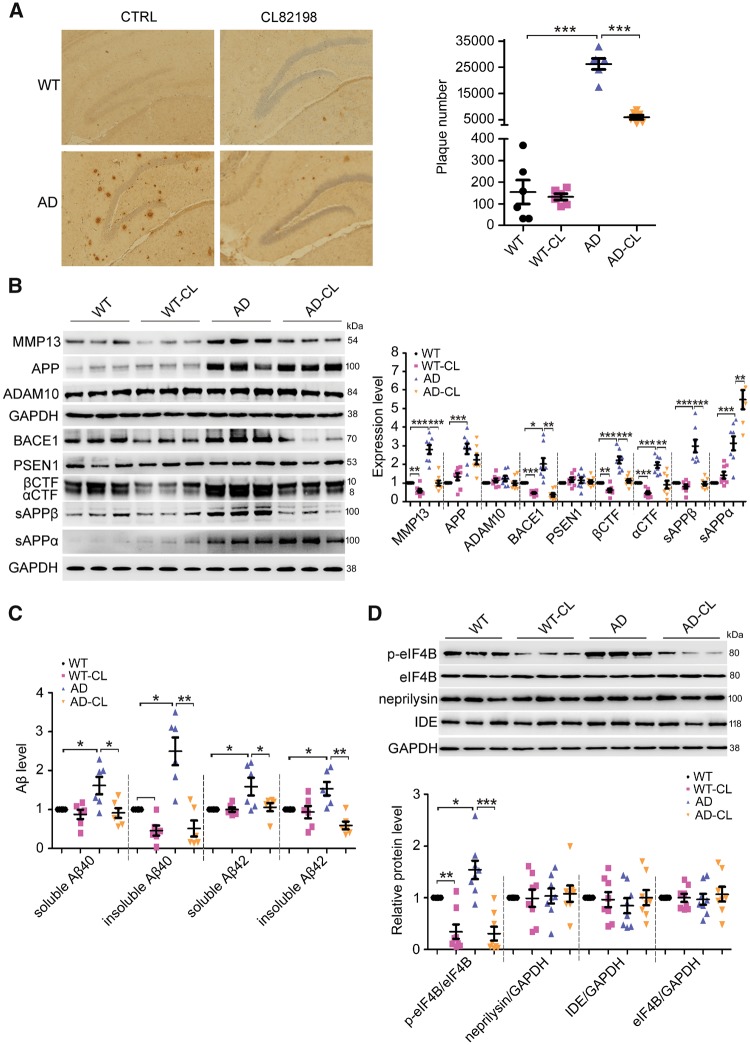Figure 5.
CL82198 ameliorates Alzheimer’s disease-associated pathology in APP/PS1 mice. (A) Immunohistochemical images and bar plot summary of neuritic plaques in the hippocampi of wild-type, wild-type with CL82198 (WT-CL), APP/PS1 (AD) and APP/PS1 mice treated with CL82198 (AD-CL) (n = 6). (B) Representative western blots and bar plot summary of MMP13, APP, ADAM10, BACE1, PSEN1, βCTF, αCTF, sAPPβ and sAPPα levels in the hippocampi of wild-type (n = 8), WT-CL (n = 8), AD (n = 8) and AD-CL (n = 8) mice. Soluble fractions were used to detect sAPPβ and sAPPα with sAPPβ and 6E10 antibodies. (C) ELISAs were used to measure soluble and insoluble amyloid-β40/42 levels in the brain homogenates of wild-type (n = 6), WT-CL (n = 6), AD (n = 6) and AD-CL (n = 6) mice. (D) Representative western blots and bar plot summary of p-eIF4B, eIF4B, neprilysin and IDE levels in the hippocampi of wild-type (n = 8), WT-CL (n = 8), AD (n = 8) and AD-CL (n = 8) mice. All values were normalized to CTRL or wild-type (1.0) within each experiment. The error bars are the SEM. n.s. = no significant difference; *P < 0.05, **P < 0.01, ***P < 0.001 (ANOVA). Aβ = amyloid-β.

